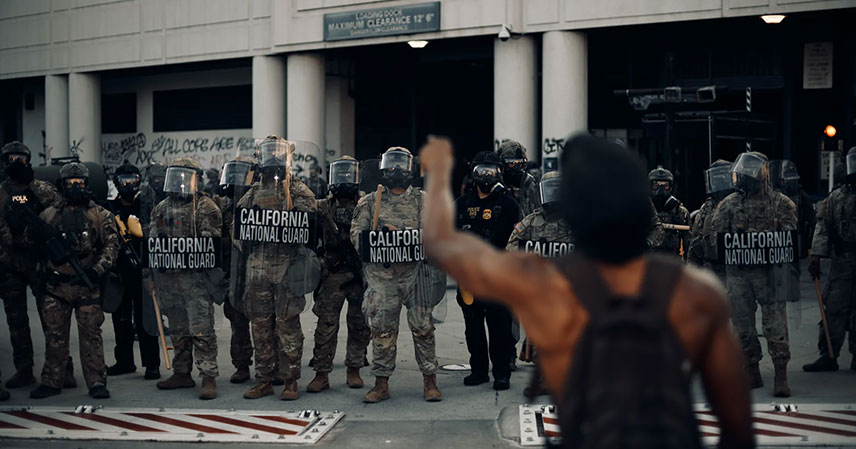In a significant shift for political communication, Department of Homeland Security Secretary Kristi Noem recently visited Oregon. Her trip was notable not just for her official meetings. She was accompanied by a unique entourage. Three prominent right-wing influencers joined her motorcade. Benny Johnson, Nick Sortor, and David Medina were among them. They meticulously documented the journey. Their cameras captured footage. This content quickly spread across social media platforms. It then reached major GOP prime-time shows.
This strategy reveals a new dynamic. For the Trump administration, these creators do more than amplify messages. They actively manufacture the evidence. This evidence is used to justify political narratives. The administration often seeks visual proof. They aim to show Democrat-led cities are struggling. Cities like Portland and Chicago are often cited. These influencers provide this “proof” in real-time. Often, they become the central focus themselves. Influencer embeds are now a core part of the administration’s media approach. They act as a content mill for consensus. This floods social media feeds. It creates state-sanctioned clips and patriotic spectacles.
The New Frontier of Political Messaging 📱
This symbiotic relationship has become increasingly clear. Over recent weeks, it was evident in Portland and Chicago. The Trump administration’s “law-and-order narrative” met its visual creators. This collision happened in plain sight. These influencers are not merely observers. They are active participants in shaping the narrative. Their presence validates the administration’s claims. It offers a tangible, if often subjective, visual record.
The administration leverages the reach of these individuals. Influencers possess vast online audiences. They can bypass traditional media gatekeepers. This allows for direct communication with supporters. It also enables rapid dissemination of specific viewpoints. The goal is to build consensus. They want to reinforce existing beliefs. This method cultivates a powerful echo chamber. It solidifies a particular political reality for their base.
This approach signals a profound change. It redefines political journalism. It blurs the lines between reporting and activism. Traditional media values objectivity. This new model prioritizes narrative control. It focuses on creating compelling visual content. This content is designed for maximum impact. It often plays on emotional responses. It aims to confirm pre-existing biases among viewers.
When Influencers Become the Story 💥
The incidents in Portland highlight this phenomenon. Last Thursday, Nick Sortor faced arrest. Portland police apprehended him for disorderly conduct. This occurred during an alleged fight. The altercation happened outside an ICE facility. Sortor’s attorney later threatened legal action. They claimed his arrest was an attempt to “silencing conservative media.” Ultimately, no charges were filed against Sortor.
Another notable event involved Katie Daviscourt. She is a former Turning Point USA staffer. Daviscourt now works for The Post Millennial. She alleged being hit in the face. This supposedly happened outside the same ICE facility. An “Antifa protester” was blamed. Daviscourt posted images of her black eye online. These images quickly went viral on X (formerly Twitter).
Both Sortor and Daviscourt presented themselves as acting as reporters. They claimed to be documenting chaos. However, their actions often made them part of the chaos. They became the very proof of it themselves. This distinction is crucial. It challenges traditional journalistic ethics. It raises questions about their role. Are they objective observers? Or are they active participants shaping the events?
The Trump administration seemingly values this aspect most. They appreciate the content these influencers produce. Sortor and Daviscourt received an invitation. They attended a White House roundtable discussion. This meeting focused on alleged Antifa violence. President Trump spoke at the event. He claimed Antifa attacked journalists. He also mentioned “agitators and anarchists.”
It is important to clarify the term “Antifa.” Antifa isn’t an organization. It lacks a centralized structure. Instead, it represents an anti-fascist ideology. There is no single, organized group component. This distinction is often lost. Especially when political narratives are being crafted. The broad labeling can serve specific political agendas. It allows for a wide range of actions to be attributed to a single, ill-defined enemy.
Implications for Media and Democracy ⚖️
This evolving media strategy carries significant implications. It impacts the landscape of information. It challenges established journalistic standards. Traditional news outlets strive for neutrality. They aim to present verified facts. The influencer model often bypasses these checks. It prioritizes narrative impact over strict factual adherence. This can erode public trust in news sources.
The deliberate blurring of lines is concerning. When “reporters” become active participants, objectivity suffers. Their personal involvement can skew perceptions. It can influence the events they are covering. This creates a feedback loop. The administration seeks specific visuals. The influencers provide them. This process can lead to manufactured outrage. It can also generate misleading narratives.
Furthermore, this strategy shapes public perception. It reinforces partisan divides. Supporters consume content tailored to their views. This strengthens existing biases. It makes cross-partisan dialogue more difficult. The constant stream of “state-sanctioned clips” can normalize extreme viewpoints. It can also demonize political opponents. This polarization poses a threat to democratic discourse.
The use of terms like “Antifa attacks” also deserves scrutiny. Trump asserted that “courageous journalists” were victims. This framing can be highly effective politically. It paints a picture of widespread, organized violence. It links opponents to lawlessness. However, the reality of Antifa is far more nuanced. It is an ideology, not a command-and-control group. Misrepresenting this can fuel fear. It can justify authoritarian responses.
Ultimately, this approach signifies a strategic shift. Political campaigns are increasingly sophisticated. They leverage digital platforms. They use social media personalities. The goal is to control the message. They aim to influence voter sentiment. This raises questions about media literacy. Citizens must discern between genuine reporting and partisan content. The future of informed public debate depends on it.
Key Insights into the Influencer Strategy 💡
- The Trump administration actively uses right-wing influencers to generate “visual evidence” that supports its political narratives, particularly around “law and order” in Democrat-led cities.
- This strategy blurs the lines between reporting and participation, as influencers often become central figures in the very events they claim to document, challenging traditional journalistic ethics.
- The administration validates these influencers by inviting them to high-level discussions, effectively turning their partisan content into official White House messaging.
- The tactic bypasses traditional media, allowing direct, rapid dissemination of specific viewpoints designed to reinforce existing biases and cultivate a strong echo chamber among supporters.
- Misrepresenting terms like “Antifa” as a monolithic organization rather than an ideology serves to simplify complex issues, fuel fear, and justify political actions against perceived opponents, impacting public perception.
This new era of political communication is complex. It demands careful consideration. The integration of social media influencers into political campaigns marks a significant evolution. It impacts how information is created and consumed. This strategy is powerful. It can shape public opinion rapidly. It can also bypass critical scrutiny.
The incidents involving Sortor and Daviscourt serve as stark examples. They illustrate the potent synergy at play. It’s a blend of political messaging and digital content creation. As citizens, understanding these dynamics is vital. We must critically evaluate sources. We need to distinguish between genuine news and manufactured narratives. The integrity of our public discourse relies on this vigilance. It is a critical challenge for democracy in the digital age.
Source: Trump Wants to Take Over Cities. Influencers Are Giving Him the Fuel to Do It



